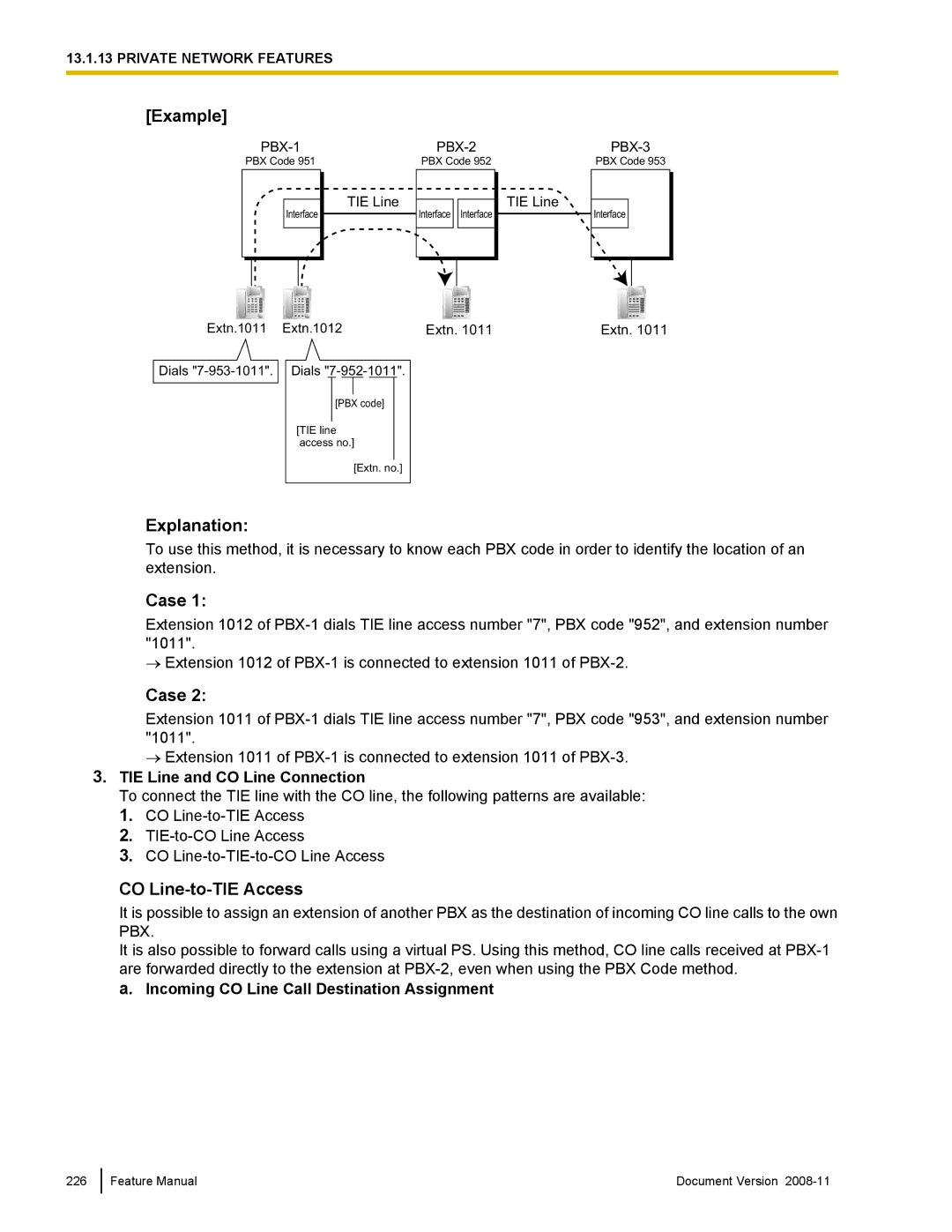
13.1.13 PRIVATE NETWORK FEATURES
[Example]
PBX Code 951
Interface
TIE Line
PBX Code 952
Interface Interface
TIE Line
PBX Code 953
Interface
Extn.1011 Extn.1012 | Extn. 1011 | Extn. 1011 |
Dials
[PBX code]
[TIE line access no.]
[Extn. no.]
Explanation:
To use this method, it is necessary to know each PBX code in order to identify the location of an extension.
Case 1:
Extension 1012 of
→Extension 1012 of
Case 2:
Extension 1011 of
→ Extension 1011 of
3.TIE Line and CO Line Connection
To connect the TIE line with the CO line, the following patterns are available:
1.CO
2.
3.CO
CO Line-to-TIE Access
It is possible to assign an extension of another PBX as the destination of incoming CO line calls to the own PBX.
It is also possible to forward calls using a virtual PS. Using this method, CO line calls received at
a.Incoming CO Line Call Destination Assignment
226
Feature Manual | Document Version |
